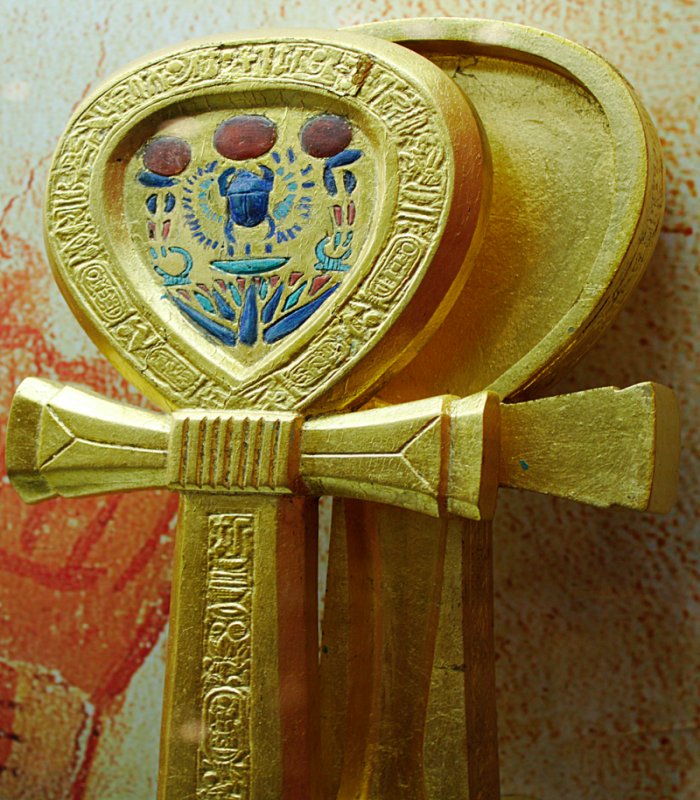What Is The Meaning Of Ankh – Ancient Egyptian Symbol
A. Sutherland - AncientPages.com - Different people have different religions. Each religion has its symbols and characteristic signs.
Egyptian Ankh. Image credit: Nachbarnebenan - Public Domain
Just as the symbol of Christianity has become the cross, known in several variants, and before it was a fish sign, so is the Ankh, a symbol of the ancient religion of Egypt.
Many Interpretations Of The Ankh
Some interpret this symbol according to its two parts – the oval shape symbolizes the eternity of living deities, and the cross that comes out of it is continuation and extension.
In Egyptian hieroglyphs since the Old Kingdom period, the Ankh symbolized life but not the 'life' (this everyday, ordinary life) we think of. The ancient Egyptians associated the Ankh with the soul's spiritual life, which most do not even think about daily.
But the Ankh is also the subject of other interpretations. It combines the two forces of life - the male and female symbols of Osiris and Isis.
It is the union between heaven and earth and unifying feminine and masculine principles.
First Dynasty stone dish in the shape of an ankh, embraced by a pair of hands representing ka.Image credit: Soutekh67 - CC BY-SA 4.0.
It also symbolized fertility as the sign's loop was associated with a woman's womb. Later, the Ankh was given a magical meaning as it was believed it possessed a mystic vital force.
Mystics and enthusiasts of secret knowledge in the 19th century and even the 20th century's New Age movements have considered the Ankh a powerful symbol of prosperity, health, good fortune, and protection against defeat, fall, and destruction.
Ankh Was Associated With Many Egyptian Deities
There are many depictions of Egyptian deities holding the Ankh. Maat, the goddess of truth, holds an ankh in her hand; however, the goddess Isis is most often seen carrying it. Also, Atum, the god of the sun from Heliopolis, and Sekhmet, a warrior goddess and a goddess of healing, were often depicted with the Ankh.
There are also representations of the pharaoh who stands between the gods and holds the Ankh in his palm. In this case, the sign emphasizes the pharaoh's divine nature.
Ankh Decorated Walls Of Egyptian Temples
In Egyptian tomb paintings and other art, the Ankh appears frequently. As a symbol of imperishable vital force, the Ankh was painted on the walls of the temples, stelae, and in friezes of objects, especially near the feet, to provide divine protection to the dead.
It often appears at the fingertips of a god or goddess in images representing the afterlife's deities conferring the gift of life on the dead person's mummy.
Left: Frieze of ankh, signs of djed and was at the top of the hieroglyph "all". Image credit: Ancient sculptor unknown; original photograph by Olaf Tausch. CC BY-SA 2.5; Right: Hathor presents the ankh to Queen Nefertari Merenmut. Scene from her tomb QV66, 13th century (19th) - Image upploader - Ramsis1978 - public domain
Numerous depictions show a symbolic combination of water and air in scenes when a god holds the Ankh before the king's nose, giving him the 'breath of life, or when a stream of water forming the Ankh runs over the king during ceremonial purification.
The Ankh is also known as the Egyptian Cross or crux ansata, which in Latin means "cross with a handle."
When Christianity came to Egypt, the ancient Egyptian symbol of Ankh was taken over by the fourth-century Coptic Christians, and their church adopted the Ankh as its unique form of the Christian cross because of its cruciform shape.
Interestingly, the Ankh, symbolizing life and accompanied by a two-winged sun and wings turned downward, was depicted on an impression of the royal seal of King Hezekiah (727–698 BC).
The artifact was unearthed during the Ophel excavations at the foot of the Temple Mount in 2015.
Ankh Is A Good Amulet – But Not For Everyone
The Ankh is a suitable amulet for those who wish to demonstrate their spiritual rather than religious beliefs.
The royal seal of Hezekiah, king of Judah. The ankh is clearly visible. Photo: Courtesy of Dr. Eilat Mazar/ Ouria Tadmor
Otherwise, the Ankh is the attribute of the god Amun ('the hidden one'), King of the Gods, one of the most powerful gods in Egypt. Egyptians frequently carried it as an amulet, sometimes accompanied by two other hieroglyphs symbolizing 'strength' and 'health. Ancient Egyptian mirrors were often shaped as the Ankh.
This universal symbol has accompanied and influenced humanity in all ages and continues to influence modern people.
The Ankh is one of many important ancient Egyptian symbols.
Written by – A. Sutherland AncientPages.com Staff Writer
Updated on Sep 21, 2023
Copyright © AncientPages.com All rights reserved. This material may not be published, broadcast, rewritten or redistributed in whole or part without the express written permission of AncientPages.com
More From Ancient Pages
-
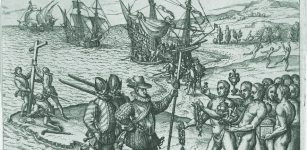 Caribbean Cannibalism Theory – Debunked By Researchers
Archaeology | Apr 16, 2021
Caribbean Cannibalism Theory – Debunked By Researchers
Archaeology | Apr 16, 2021 -
 12 Ancient Egyptian Symbols Explained
Ancient Symbols | May 9, 2017
12 Ancient Egyptian Symbols Explained
Ancient Symbols | May 9, 2017 -
 Were Mysterious Ancient Man-Made Earthworks In The Amazon Forest Ritual Communication Spaces?
Archaeology | Sep 6, 2017
Were Mysterious Ancient Man-Made Earthworks In The Amazon Forest Ritual Communication Spaces?
Archaeology | Sep 6, 2017 -
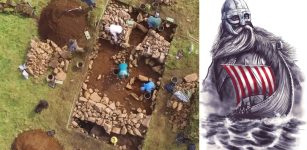 Possible Viking Boat Burials Discovered On The Isle Of Mull
Archaeology | Sep 12, 2022
Possible Viking Boat Burials Discovered On The Isle Of Mull
Archaeology | Sep 12, 2022 -
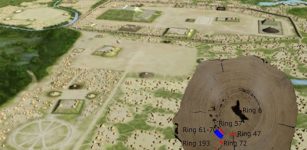 Huge Mitchell’s Log Reveals When The North American City Cahokia Experienced Political And Economic Zenith
Archaeology | Oct 23, 2025
Huge Mitchell’s Log Reveals When The North American City Cahokia Experienced Political And Economic Zenith
Archaeology | Oct 23, 2025 -
 12,000-Year-Old Archaeological Evidence Of Human-Dog Friendship In Alaska
Archaeology | Dec 5, 2024
12,000-Year-Old Archaeological Evidence Of Human-Dog Friendship In Alaska
Archaeology | Dec 5, 2024 -
 Ancient Secrets Of Sacred Lismore – Is There A ‘Second’ Iona In Scotland?
Archaeology | Jul 4, 2017
Ancient Secrets Of Sacred Lismore – Is There A ‘Second’ Iona In Scotland?
Archaeology | Jul 4, 2017 -
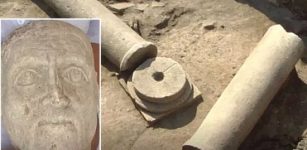 Third-Century Sculpture Of Roman Emperor Aurelian Unearthed In Bulgaria
Archaeology | Sep 5, 2018
Third-Century Sculpture Of Roman Emperor Aurelian Unearthed In Bulgaria
Archaeology | Sep 5, 2018 -
 Norse Legend Of Hero Sigmund And The Magical Sword In The Branstock Tree
Featured Stories | Jul 8, 2025
Norse Legend Of Hero Sigmund And The Magical Sword In The Branstock Tree
Featured Stories | Jul 8, 2025 -
 Rare 2,500-Year-Old Scythian Bone Sceptre Discovered In Bulgaria
Archaeology | Oct 3, 2023
Rare 2,500-Year-Old Scythian Bone Sceptre Discovered In Bulgaria
Archaeology | Oct 3, 2023 -
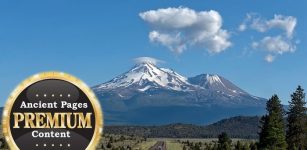 Secrets Of Mount Shasta – One Of The Most Sacred Places On Earth
Ancient Mysteries | Oct 24, 2015
Secrets Of Mount Shasta – One Of The Most Sacred Places On Earth
Ancient Mysteries | Oct 24, 2015 -
 Legend Of The Four Dragons That Disobeyed The Jade Emperor And Gave China Water
Chinese Mythology | Feb 22, 2019
Legend Of The Four Dragons That Disobeyed The Jade Emperor And Gave China Water
Chinese Mythology | Feb 22, 2019 -
 Never-Before-Seen Magnificent 2,000-Year-Old Second Temple Found By Western Wall In Jerusalem Revealed To The Public
Archaeology | Jul 29, 2021
Never-Before-Seen Magnificent 2,000-Year-Old Second Temple Found By Western Wall In Jerusalem Revealed To The Public
Archaeology | Jul 29, 2021 -
 Mysterious Viking Gerdrup Grave – Burial Place Of Sorceress Katla And Her Son Odd Mentioned In The Eyrbyggja Saga?
Featured Stories | Mar 22, 2023
Mysterious Viking Gerdrup Grave – Burial Place Of Sorceress Katla And Her Son Odd Mentioned In The Eyrbyggja Saga?
Featured Stories | Mar 22, 2023 -
 French Grotte de Cussac Cave Reveals Secrets On Life And Death 25,000-30,000 Years Ago
Archaeology | Jun 22, 2020
French Grotte de Cussac Cave Reveals Secrets On Life And Death 25,000-30,000 Years Ago
Archaeology | Jun 22, 2020 -
 World’s Oldest Dictionaries Are 4,500-Year-Old Cuneiform Tablets Discovered In Ebla
Ancient History Facts | Aug 19, 2016
World’s Oldest Dictionaries Are 4,500-Year-Old Cuneiform Tablets Discovered In Ebla
Ancient History Facts | Aug 19, 2016 -
 Clurichaun – Little Naughty And Drunken Fellow Akin To Leprechaun In Irish Folklore
Featured Stories | Sep 13, 2019
Clurichaun – Little Naughty And Drunken Fellow Akin To Leprechaun In Irish Folklore
Featured Stories | Sep 13, 2019 -
 Curious Golden Figurine Of Female Dwarf Is A Puzzle
Archaeology | Feb 16, 2014
Curious Golden Figurine Of Female Dwarf Is A Puzzle
Archaeology | Feb 16, 2014 -
 Sodré Astrolabe, Found On Portuguese Armada Shipwreck Is The Oldest In The World
Archaeology | Mar 19, 2019
Sodré Astrolabe, Found On Portuguese Armada Shipwreck Is The Oldest In The World
Archaeology | Mar 19, 2019 -
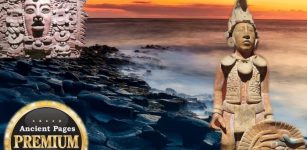 Traces Of Ancient Maya In Europe? Controversial Theory Examined
Ancient Mysteries | May 25, 2018
Traces Of Ancient Maya In Europe? Controversial Theory Examined
Ancient Mysteries | May 25, 2018

